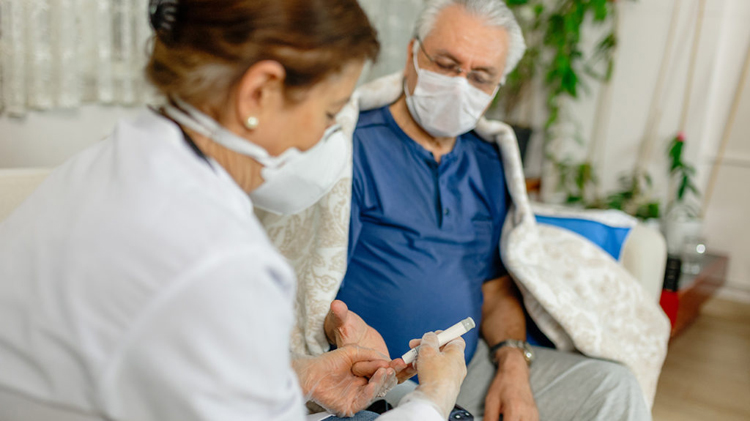Nick Caracandas from Diabetic Athletic answers frequently answered questions regarding glucose levels and exercise.
Cardio
Q: What should I do if my blood glucose is high before I do cardio?
If your blood glucose is high pre-cardio, consider taking half (or less) of your usual correction dose and assess 25 minutes into training. A full correction dose might stimulate a hypo.
Q: What should I do if my blood glucose is low before I do cardio?
Consume an adequate amount of carbohydrates to bring blood glucose back into range. Cardiovascular exercise has the tendency to lower blood glucose, thereby having the potential to amplify the hypo. Short bouts of High-Intensity Interval Cardio can increase blood glucose levels. But the nature of the cardio after may lower blood glucose back down again, defeating the purpose.
Weight training
Q: What should I do if my blood glucose is high before I weight train?
If your blood glucose is high pre-weight training, consider taking your usual correction dose and assess 25 minutes into training. Strength training has the potential to increase blood glucose levels. Taking less than your normal correction dose may not account for the blood glucose rise that often accompanies this form of stressful training.
Q: What should I do if my blood glucose is low before I weight train?
Consume a liquid carbohydrate sports drink. This acts fast and won’t bloat you like a solid food meal. The number of carbs to consume will largely depend on the severity of your hypo. Weight training can increase your blood glucose levels. Accommodate this when eating and avoid over-treating your hypo with too many carbs, which will inescapably drive you into hyperglycaemia. Short bouts of High-Intensity Interval Cardio can increase blood glucose levels. The strength training that follows may increase blood glucose further and get you back into a safe range: 15-30 secs on with 45-60 sec active recovery. I personally use the bike and row sprints. The severity of your hypo will largely be down to how much insulin is circulating in your system. The more insulin, the more severe the hypo. Subsequently, carbohydrates may be needed.
Other
Q: As a female, will I get big and bulky like a bodybuilder if I lift weights?
No. You are not set up hormonally for rapid muscle gain compared to a male.
Q: What is the best form of cardio to burn fat?
A format you prefer and can consistently do on a regular basis.
Q: Can I train abs every day?
If you wish. Just make sure you hit them from different angles. Lateral, flexion, rotation, and extension.
Q:What if I am sore after a workout? is this a bad sign? Am I injured?
Not always.Soreness after a training session indicates you’ve pushed your body more than it’s normally exposed to. This dull pain is termed as Direct Onset of Muscle Soreness (DOMS). Don’t panic. It usually subsides after a few day recoveries. To recover well, you must have appropriate rest and food. You also need to manage your diabetes extremely well. Hyperglycaemia will jeopardise training recovery and prolong muscle soreness. The better the control in conjunction with good quality food and rest, the quicker DOMS will subside.
Q: Do you have to be sore and have a good workout?
No.
Q: Do I have to push myself to complete exhaustion every training session?
No. Never leave the gym feeling damaged, vile or lifeless. Stimulate don’t obliterate.
Q: When is the best time to weigh myself?
First thing in the morning after your bowel movement, without clothes on. Use the same scale every time to keep things accurate. If you do weigh later in the day, keep the time of weighing consistent over a number of weeks.

MEET THE EXPERT
Nick Caracandas is a strength and conditioning coach with a passion for helping fellow diabetes patients learn more about how to live life with more diabetic impact, freedom and control. With over 15 years as a fitness professional and gym owner, he has developed an online programme that takes diabetes patients from a place of struggle and guides them to a place of empowerment and confidence through exercise and nutrition. As a Type 1 diabetes patient for over 24 years, he has created multiple online programs that merge his experience with being a diabetic and being a reliable option for other diabetics worldwide.
Header image by FreePik




















